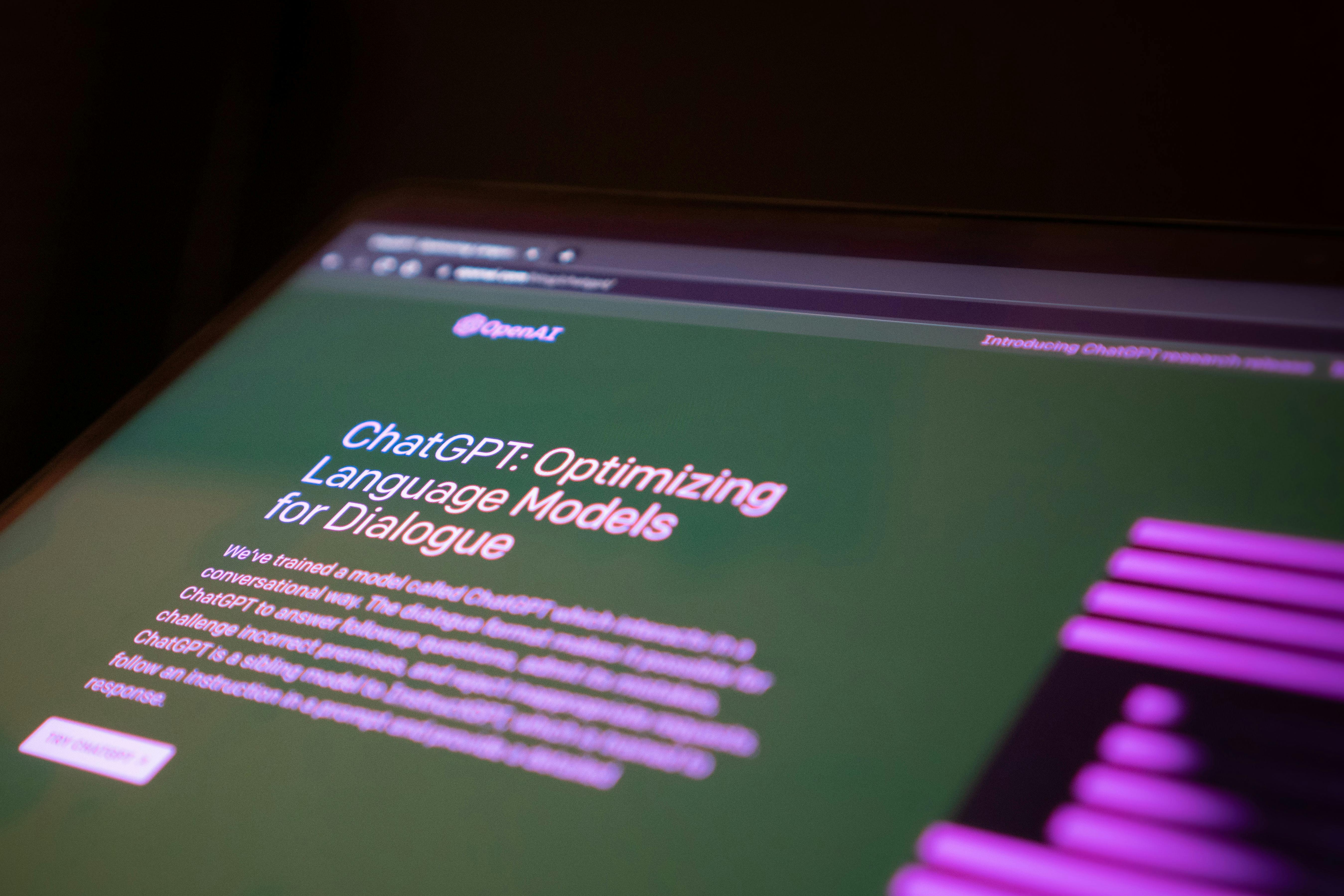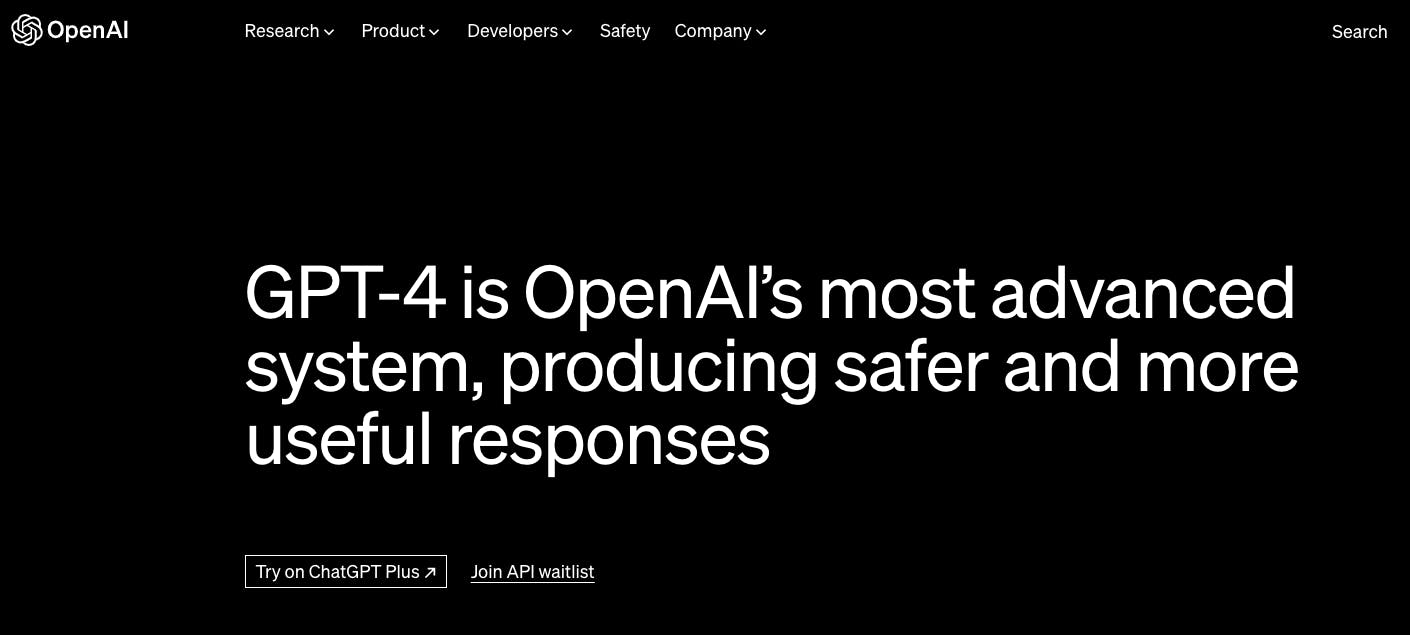The new developments in AI are really exciting and have led to the creation of GPT-4, which is a major breakthrough. If you are interested in artificial intelligence, you have probably heard of GPT-3, the third-generation language model developed by OpenAI that can generate coherent and diverse texts on almost any topic. But did you know that there is a new and improved version of GPT-3 that is even more powerful and versatile? Meet GPT-4, the latest and most advanced system from OpenAI that can produce safer and more useful responses across a wide range of domains and tasks.
What is GPT-4 and what can it do
GPT-4 stands for Generative Pre-trained Transformer 4, and it is a large multimodal model that can accept both image and text inputs and emit text outputs. It is based on the same deep learning approach as its predecessors, but with more data and more computation to create increasingly sophisticated and capable language models. GPT-4 has been trained on a massive corpus of text and images from the internet, covering various topics and genres.

GPT-4 can perform many different tasks with high accuracy and creativity, such as:
Writing: GPT-4 can generate, edit, and iterate with users on creative and technical writing tasks, such as composing songs, writing screenplays, or learning a user’s writing style. For example, it can explain the plot of Cinderella in a sentence where each word has to begin with the next letter in the alphabet from A to Z, without repeating any letters.
Reasoning: GPT-4 can solve difficult problems with greater accuracy, thanks to its broader general knowledge and problem-solving abilities. For example, it can schedule a meeting for three people based on their availability or pass a simulated bar exam with a score around the top 10% of test takers.
Vision: GPT-4 can process visual input and generate relevant text output. For example, it can describe what is happening in an image or caption a meme.
How is GPT-4 different from GPT-3?
GPT-4 is not just an incremental improvement over GPT-3. It is a major leap forward in terms of its capabilities, safety, and alignment. Here are some of the key differences between the two models:
Size: GPT-4 has 1 trillion parameters, which is 10 times more than GPT-3. This means it can store and process more information and generate more diverse and coherent texts.
Multimodality: GPT-4 can handle both text and image inputs, while GPT-3 can only handle text inputs. This means it can perform more complex and creative tasks that require both verbal and visual understanding.
Safety: GPT-4 is 82% less likely to respond to requests for disallowed content and 40% more likely to produce factual responses than GPT-3.5 on internal evaluations. This means it is more aligned with human values and preferences and less prone to generating harmful or misleading content.
How can I access GPT-4?

GPT-4 is currently available through two channels:
ChatGPT Plus: This is a premium service that allows users to interact with GPT-4 in a conversational way. The dialogue format makes it possible for GPT-4 to answer follow-up questions, admit its mistakes, or provide feedback. Users can also customize their experience by choosing different personas, topics, or tones for GPT-4.
OpenAI API: This is a waitlist-based service that allows users to access GPT-4’s text input capability via a simple interface. Users can specify their desired task, input, output length, temperature, frequency penalty, presence penalty, stop sequence, etc., and receive a response from GPT-4.
Why should I care about GPT-4?
GPT-4 is not just a cool technology. It is a game-changer for artificial intelligence and humanity. It represents a significant step towards achieving artificial general intelligence (AGI), which is the ultimate goal of creating machines that can perform any intellectual task that humans can. It also opens up new possibilities for transforming work and creativity with AI. Imagine being able to:
Generate high-quality content for your blog, website, social media, or marketing campaigns with minimal effort.
Learn new skills or subjects by asking questions or requesting explanations from GPT-4.
Collaborate with GPT-4 on creative projects
conclusion -
GPT-4 is a remarkable achievement in the field of artificial intelligence and natural language processing. It is the most advanced system from OpenAI, capable of generating safer and more useful responses than its predecessors. It can handle complex tasks such as passing professional and academic exams, composing creative and technical writing, and reasoning with visual and textual inputs. It is also more aligned with human values and preferences, thanks to the extensive human feedback and safety research that went into its development.
However, GPT-4 is not perfect. It still has limitations and challenges that need to be addressed, such as ensuring its reliability, fairness, accountability, and transparency. It also raises ethical and social questions about the impact of such powerful technology on humanity and the world. That’s why OpenAI is committed to creating safe and beneficial artificial general intelligence (AGI) that can be shared and used by everyone.
If you are interested in learning more about GPT-4, you can try it out on ChatGPT Plus -

You can also follow OpenAI on Twitter or subscribe to their newsletter for the latest updates and news.
We hope you enjoyed this blog post and found it informative and engaging. Please share it with your friends and colleagues who might be interested in GPT-4 and AI.
Thank you for reading!

